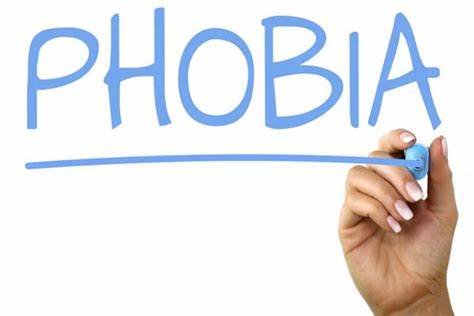The term “high-functioning” has become a common descriptor in mental health, used by clinicians and the general public alike to categorize individuals who appear to manage daily life despite living with a mental health diagnosis. However, this oversimplified label carries significant inaccuracies, perpetuates stigma, and often leads to harmful consequences. It’s time to critically examine and reconsider its use.
The Myth of “High-Functioning”
At first glance, “high-functioning” may seem like a benign, even positive label—suggesting resilience or capability. However, this term:
Lacks Clinical Precision: It is not part of diagnostic frameworks such as the DSM-5 or ICD-11. Instead, the DSM-5 uses terms like “in remission” to reflect the fluid nature of symptomatology.
Oversimplifies Mental Health: By focusing on outward functionality (such as holding a job or maintaining relationships), it ignores the internal distress or invisible struggles individuals may experience.
The binary notion of being “high” or “low” functioning also neglects the spectrum and fluctuating nature of mental health conditions.Someone who appears high-functioning in one area of life (work) may simultaneously struggle profoundly in another (personal relationships or self-care).
The Consequences of the Label
1. Denial of Services
One of the most damaging aspects of the term is how it influences resource allocation. Individuals labeled “high-functioning” are often deemed ineligible for critical services, under the false assumption that they do not require support. This can lead to:
•Premature discharge from mental health programs
•Reduced access to crisis intervention
•A higher likelihood of relapse or worsening symptoms
Case Example:
A young professional diagnosed with bipolar disorder may manage well at work but struggle with suicidal ideation or severe mood swings at home. Yet, due to the “high-functioning” label, their access to therapeutic services may be discontinued, leaving them vulnerable.
Internalized Stigma
The label reinforces a false hierarchy within the mental health community, suggesting that those who are “high-functioning” are somehow “doing better” than others. This can lead to shame and guilt for those whose symptoms interfere more visibly with their lives, creating a divide in the peer support network.
Masking Suffering
“High-functioning” individuals may feel pressured to mask their symptoms, fearing that acknowledgment of their struggles could strip them of the limited services they do receive. This perpetuates isolation and prevents authentic healing.
Why Mental Health Is Not Static
Mental health is dynamic, not fixed. An individual’s ability to function can fluctuate dramatically over days, weeks, or months. A person labeled high-functioning during one period may experience severe impairment later, rendering the label inaccurate and misleading.
A Roadmap for Change
1. Educating Mental Health Practitioners
Clinicians must receive ongoing education about the limitations and potential harm of using terms like “high-functioning.” Training should emphasize the importance of:
•Holistic assessments that consider both external functionality and internal well-being
•Person-centered care tailored to the complexities of each client’s condition
2. Emphasizing Individualized Treatment
Mental health care should move away from generalized labels toward personalized treatment plans. Services must reflect individual needs, goals, and fluctuations rather than arbitrary assumptions about capacity.
3. Reforming Policy and Access to Care
Policymakers must recognize the risks associated with discontinuing services based on perceived functionality. Legislative changes should ensure that:
•Services remain available and adaptable based on evolving needs
•Eligibility for mental health programs is not contingent on misleading labels
Language Shift
The shift in language can have profound effects on reducing stigma and creating a more inclusive mental health dialogue. Replacing terms like “high-functioning” with descriptors such as:
•“Currently managing symptoms with support”
•“Experiencing fluctuating symptom intensity”
•“Maintaining stability with ongoing treatment”
This shift highlights the continuum of mental health and reflects the reality that struggle and success coexist.
Public Awareness Campaigns
Educational campaigns should target public understanding of mental health, dismantling the notion that outward success equates to emotional stability. By amplifying stories from individuals with lived experiences, the narrative around mental health can become more nuanced and compassionate.
A More Ethical and Inclusive Future
Eliminating the term “high-functioning” is not about erasing the recognition of individual strengths—it’s about honoring the complexities of mental health and ensuring that care remains accessible, personalized, and adaptive.
By rejecting this outdated label, we can build a mental health landscape that:
•Recognizes the full scope of human experience
•Meets individuals where they are
•Prioritizes long-term well-being over superficial assessments of functionality
It’s time for clinicians, policymakers, and society to step away from simplistic categorizations and embrace a more compassionate, fluid, and realistic approach to mental health.
Max E. Guttman is the owner of Mindful Living LCSW, PLLC, a private mental health practice in Yonkers, New York.
- Max E. Guttmanhttps://mentalhealthaffairs.blog/author/max-e-guttman/
- Max E. Guttmanhttps://mentalhealthaffairs.blog/author/max-e-guttman/
- Max E. Guttmanhttps://mentalhealthaffairs.blog/author/max-e-guttman/
- Max E. Guttmanhttps://mentalhealthaffairs.blog/author/max-e-guttman/








1 thought on “Rethinking “High-Functioning” in Mental Health: A Call for Change”
Pingback: The Peer Standard | Recovery Now❗️